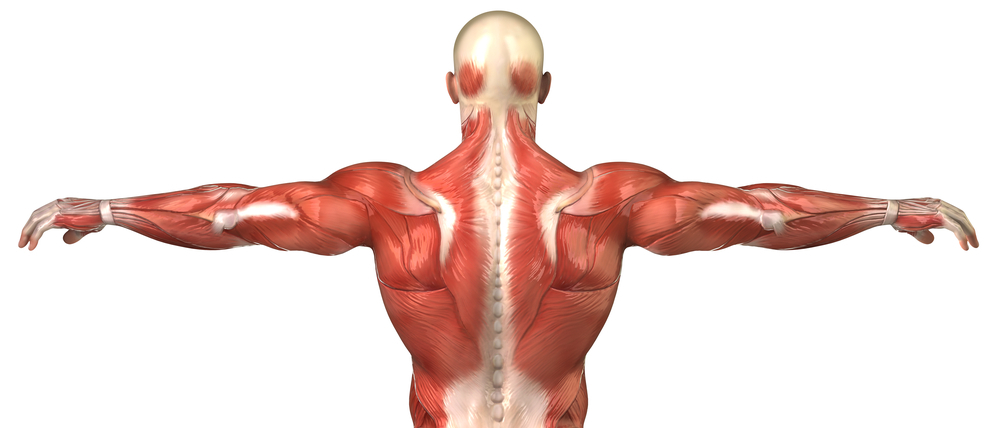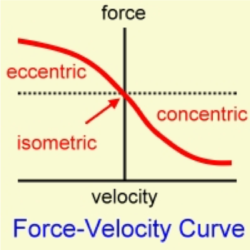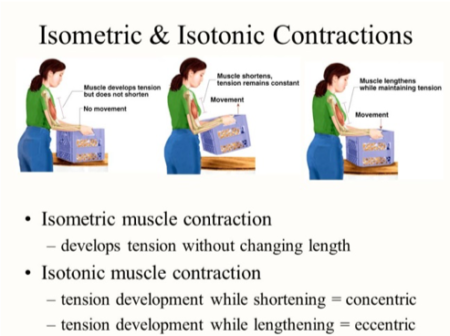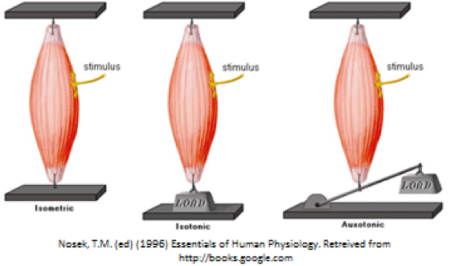Imagine you are sitting on a sofa, feeling comfortable and you’re getting thirsty. Then you notice there is a cup of tea on the table in front of you. What will you do? Lifting it up to your mouth, you have a sip, holding it in your hand while enjoying the taste then putting it back on the table. This is a very simple activity which nearly everyone will do multiple times in their lives. A simple action like this can only be achieved with the use of four types of muscle contractions. From a simple posture to a complicated movement or action, you will always utilize these types of muscle contractions in your daily routine.
Before we take a look at what these contractions are we need to have a sense of the basic unit of muscle, the sarcomere, which is neatly illustrated below in a relaxed and contracted state. It consists of many proteins involved in muscle contractions, but we’ll focus on Actin and Myosin, also known as the thin and thick filaments.
Simplistically, a contraction occurs when myosin heads bind to the actin filaments (cross-bridge theory) pulling them inward toward the H zone causing a shortening of each individual sarcomere (Z-disk to Z-disk). Therefore, the summation of individual sarcomere shortenings is what causes a muscle contraction.

Let’s first take a look at a concentric contraction, also known as a shortening contraction.
If we remember the process of lifting a tea cup to your mouth, the muscle length will shorten when generating force, which is achieved by generating a force bigger than the load (tea cup). This shortening of the muscle length while generating force is what allows you to lift the cup up to your mouth. You may wonder why it is slower to lift a heavy load than a light one, such as lifting a dumbbell versus lifting a tea cup. The mechanism behind it is easy to understand and it is based on a Force-Velocity relationship pictured here. When generating force, the myosin heads need to attach to the actin filament before being able to pull the actin inwards.
There is a constant rate of myosin head attachment to actin, so if we shorten the muscle too fast, less myosin heads attach to actin which results in less force being generated and vice versa. Therefore, for muscle undergoing a concentric contraction, generating force and shortening velocity is an inverse relationship whereby contraction velocity will increase as the load being lifted decreases. Hence, we can lift a light load (tea cup) much faster than a heavy load (dumbbell). Of note, the faster a muscle generates a larger force, the greater the power that muscle is considered to have.
Isometric & Isotonic Contractions
With the tea cup now next to your mouth, you take a sip and hold it without any movement of your hand while drinking it. This holding posture would be considered an isometric contraction. In this instance, force is being generated to maintain the position of the cup, while muscle length remains unchanged (zero velocity). The ability to maintain force without muscle length changing is in part due to “catch tension” which is the mechanism by which the actin-myosin cross-bridge kinetics resists stretching or unlinking while maintaining force production.
After enjoying that sip of tea, you may want to put it back on the table. Here, you are using an isotonic contraction with your arm muscles. An isotonic contraction is when the muscle (e.g. biceps) generates force and a velocity (length change) under condition of a constant load, which is also based on the Force-Velocity relationship shown previously. In your mind you may be thinking, isn’t the process of lifting up the tea cup mentioned above also a kind of isotonic contraction? The answer is yes! A concentric contraction refers to a constant load whereby the muscle shortens, therefore it is a type of isotonic contraction.So, could you say that the action of putting down the tea cup onto a plate is a concentric contraction? The answer is no, there is another condition we have yet to address. If we focus on the biceps, lowering down the tea cup leads to muscle lengthening while constant force is still being generated. This cannot be a concentric contraction as that would require muscle shortening, but since it is a constant load, it is considered an isotonic contraction.
Concentric & Auxotonic Contractions
Imagine again if you will that you now feel energetic and want to do a pull-up after relaxing with a cup of tea. An underhand pull-up, as the figure shows, requires isotonic contractions. When pulling up, you must employ a concentric contraction of the biceps, however, when lowering the whole body you must utilize an eccentric contraction also known as a lengthening contraction. This is where the muscle is forced to lengthen to maintain a constant load (i.e. lowering a tea cup or a box) or when an external load is heavier than the maximum force generated by the muscle. The mechanism behind this is no longer successfully explained by the cross-bridge theory, Length-Tension curve or Force-Velocity relationship.
The absolute tensions achieved by eccentric contractions are highly relative to a muscle’s maximum tetanic tension generating capacity and are not relative to the lengthening velocity. These may imply that there is a resistance nature to lengthening of skeletal muscles. However, more evidence is needed to parse this out and some are beginning to shed light on this.
You may be thinking, what happens when the load is not constant and therefore the force requirements change. Sticking with our tea drinking analogy, let’s say your tea cup develops a hole in it, slowly losing tea as you’re raising it to your mouth. The load is decreasing so your muscles must alter their force generation and lengthen constantly to ensure the cup reaches your mouth at the appropriate velocity. This type of contraction is termed auxotonic, which means changing the force and length in response to a change in load.
You should now be more familiar with the four types of muscle contractions that are involved in our daily activities. Muscle physiologists utilize different protocols to exploit these contractions which allow them to fully characterize muscle mechanics in various neuromuscular disease models. If you are interested in taking a step further by learning how researchers use our instruments to elucidate muscle properties, please feel free to contact us to discuss your work!









